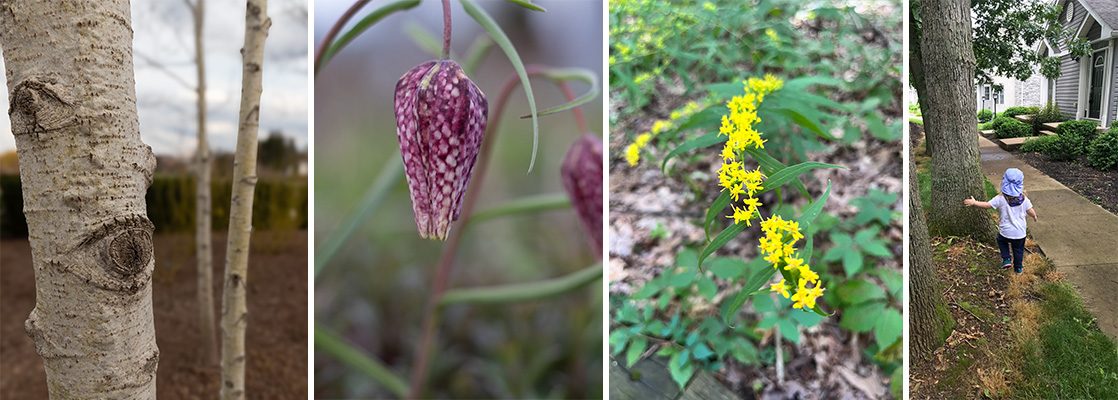Larch 245: Ecology and Plants II

This page aims to provide students with supplemental resources for ecology and plants. It will be constantly under construction.
Course Description and Objectives
Larch 245 Ecology and Plants II is the single course in our curriculum that most focus on learning about plants and constructing plant palettes appropriate to various designed landscapes and their contexts. The course strongly emphasizes understanding plant ecology and planting culture, which are critical aspects of a landscape architect’s education. Plants, often under-appreciated in our discipline and allied professions, are complex living organisms that take root, grow, interact with other life forms and surrounding environs, and die and regenerate. As life forms on this earth, they have intrinsic value—value for their own sake.
It’s important to note a significant societal trend towards ‘plant blindness’—the inability to appreciate plants in their environment for their aesthetic or biological characteristics (Brzuszek et al., 2011; Griswold, 1994; Wandersee & Schussler, 1999). This lack of attention to plants stems from an anthropocentric view that ranks plants as inferior to animals, which is a bias that needs to be overcome. From our discipline’s focus on environmental sustainability, fostering a relationship between humans, other life forms, and natural processes is crucial. This is one way to effectively promote several key UN Sustainable Development Goals, including Good Health and Well-being [3], Industry, Innovation and Infrastructure [9], Reduced Inequalities [10], Sustainable Cities and Communities [11], Responsible Production and Consumption [12], Climate Action [13], and Life on Land [15] (United Nations, 2024).
Moreover, planted landscapes perform when well-designed, managed, and in the right place at the right time. That is, they provide essential instrumental values such as ecosystem services. According to Michigan State University Extension (2024), Kremer et al. (2016), and Quijas et al. (2010) plants provide essential ecosystem services across all urban systems, including enhancing biodiversity, carbon sequestration, watershed management, microclimate moderation, and pollinator support. They can also increase residential and commercial land values (Minor et al., 2023; Siriwardena et al., 2016).
Perhaps most importantly, for aspiring and practicing landscape architects, plants are beautiful and intriguing in their own right. They articulate and animate space and, thus, help create memorable places. Plants express our values. They often deeply express cultural values in their landscape setting—good and bad, inclusive or exclusive. A large body of research even shows that plants can enhance mental well-being, stimulate workplace productivity, and reverse nature deficit disorder (Kalantzis, 2016; ten Brink et al., 2016).
In summary, plants immensely contribute to sustaining life on planet Earth. As landscape architects, we have the privilege (I’d argue it is a moral imperative) of helping set these benefits in motion. ASLA has also integrated this professional value and moral imperative into its mission (American Society of Landscape Architecture, 2022). Let’s shift from ‘plant blindness’ to ‘plant sightedness’ (and all the other senses!), including how plants can be activated in the landscape. Larch 245 will help you on this journey.
Larch 245 is part of the core professional sequence in our accredited program. It extends the basic ecology and introduction to plant communities gained in Larch 145 (Ecology and Plants I). This course is a key prelude to Larch 246 (Ridge & Valley field course) and Larch 335 Planting Methods. The more you learn in Larch 245, the more rewarding subsequent courses and your profession will be. This course aims to develop your knowledge of native and introduced (i.e., ‘non-native’) plants in their landscape and ecosystem contexts, which is vital to your growing abilities in landscape architecture.
Upon the completion of Larch 245 you should:
- be able to correctly identify and name 135-150 plants (in small batches) drawn from across a broad spectrum of woody and herbaceous landscape species and their cultivars and, where relevant, associate these plants with their natural plant communities.
- be able to associate select plants with their landscape performance[1] attributes, their ecological and biological/bioclimatic contexts, and their aesthetic, social, cultural, and functional roles and capabilities.
- be able to conduct plant observation and identification techniques, mostly in the field, but, depending on the weather, also in the lab/studio;
- become more adept at developing woody and herbaceous plant palettes for select landscape genres, from designed ecosystems to urban landscapes to ornamental gardens, including being able to discern when it’s best to use either native or non-native species/cultivars; and
- more strongly appreciate plants as essential to the landscape architect’s toolkit, and as key factors in promoting UN Sustainable Development Goals.
[1] Landscape performance is “a measure of the effectiveness with which landscape solutions fulfill their intended purpose and contribute to sustainability. It involves assessment of progress toward environmental, social, and economic goals based on measurable outcomes (Landscape Architecture Foundation, 2024).”
Reference Resources
- Leaf and Tree Forms, Patterns, and Parts (click to open/download)
- External Form of a Woody Twig (click to open/download)
- Glossary of Botanical and Horticultural Terms (click to open/download)
- Native American Ethnobotany: A Database of Foods, Drugs, Dyes and Fibers of Native American Peoples, Derived from Plants.
Plant Walk Notes
Plant Walk Meeting Locations
This core Larch 245 activity involves observing plants in the field, taking notes on field lectures and your own observations, and sketching plant details. This page shows the meeting location for each plant walk and an approximation of where each plant for each walk is located. Plant walk details are located on the course canvas website.